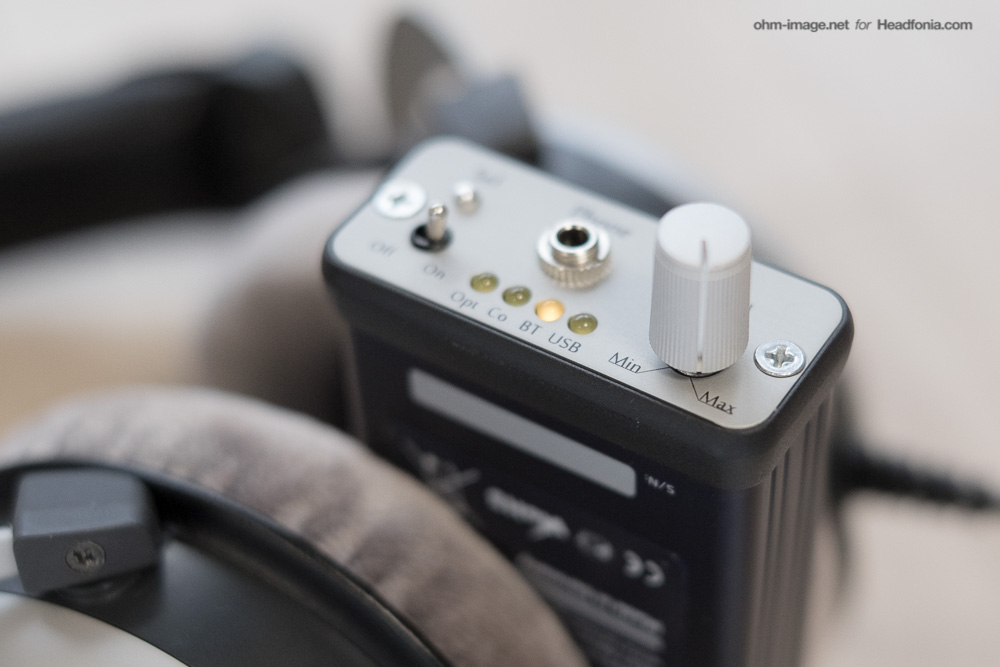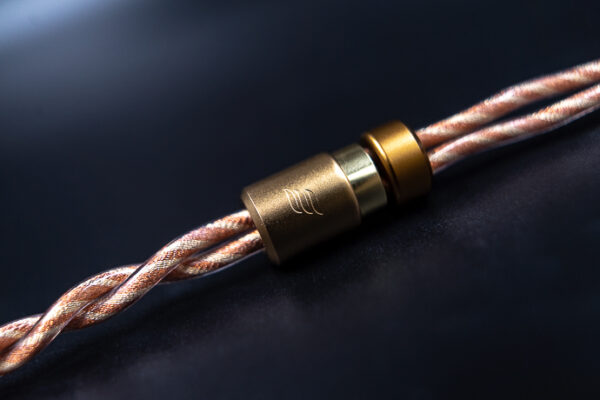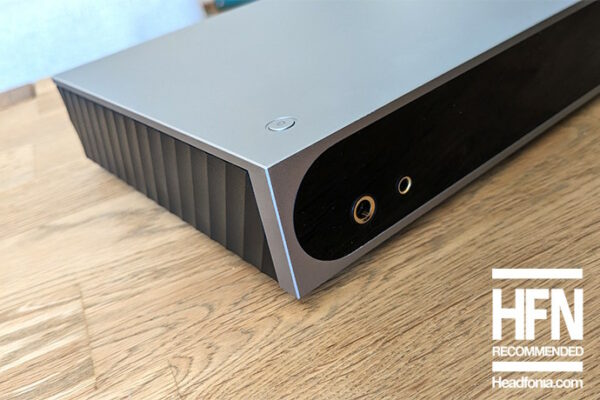Disclaimer: TENTO Engineering loaned Headfonia the TENTO Porta DAC 1866 for the purposes of this review.
Two years ago, Dimitri, the multinational behind Musica Acoustics, asked me to test a prototype Russian DAC. It just so happens that the multinational happened to have roots in Russia. I assumed partisanship. I was an ass. Instead I got an awesome DAC that had me wishing for the final product. Part of what made 1866 rock was its R2R multi-bit DAC. The other part was that it was 100% dedicated DAC work.
Okay, so it spits out both line-level and headphone signals, but it takes in only digital signals.
Myst Audio licensed out the Porta DAC to TENTO Engineering (site still under construction) in Germany, where it is made. Thank God. It is way more polished. And, thank God, the same great audio stuff I loved two years ago made the cut again in 2014. Only now, it’s better than ever.
Just remember, under its slender cigar case, the Porta DAC 1866 is a portable, battery-powered DAC. And these are its inputs:
optical
USB
coaxial
Bluetooth
Essentially: all your digital bases are belong to Porta DAC 1866. Basically: smartphone/tablet users: Bluetooth it and Bob’s your uncle. Awesome.
Switching between inputs requires bumping the small nipple above the ON/OFF switch. Porta DAC’s original engineers paid great attention to the quality and character of the sound that spat from it. My TouchMyApps review was positive- with one major proviso: Bluetooth input, while a world’s first in a portable do-all DAC/headphone amp, was hamstrung by poor reception.
Dimitri promised me that it would be fixed.
It is now two years later. In the meantime, Venturecraft have also brought to market a portable multi-input DAC that works wirelessly as well as tethered. And, that DAC has far better Bluetooth reception. In fact, I managed around 20 metres between the DAC and my iPhone at this year’s spring Fujiya Avic festival. I get about 1,5 – 3 metres with the Porta DAC.
Still, no portable battery-operated DAC offers the sheer number of connective options that Porta DAC does. And, it is my opinion Porta DAC offers a sound that is far more attractive long term, than any other solid state DAC that attempts to tread the same path.
Sound
Firstly, it is important to realise that PortaDAC utilises the AD1866 dual 16-bit DAC. Yes, 16-bit. AD1866 is an older DAC chip. Believe it or not, that is one of the Porta DAC’s biggest selling points. It’s been around longer than many of us have been interested in the world of audiophilia. And it uses an R2R ladder, making it potentially more accurate than traditional DACs. Generally, R2R converters are also more expensive to manufacture and implement.
What about 24-bit audio? Porta DAC interfaces through a 24-bit receiver, and therefore, handles 24-bit files just perfect. If I didn’t tell you, you’d think it was a 24-bitter from ground up.
Largely, its internal components play typically: from 20 Hz and up, just as you’d expect.
But Porta DAC isn’t all about signal clarity as are some other DACs. Neither is it about end-to-end contrast in the way that Cypher Labs’s AlogRhythm DACs are. It is about micro contrast, and surface tension. It is warm, but not smarmy. It is smooth, but not buttery. It is rich, but not ingratiating. And, it has the best implemented low pass that I’ve heard in a portable DAC or amp. The low pass filter is aggressive, starting at about 5kHz. By 10kHz, the signal is rolled off by around 2dB. As per my measurements, it never reaches 20.000 Hz.
As many of you may have by now realised, I am an unapologetic Beyerdynamic DT880/600 user. I also dig the fast and light transients of Grado’s mid-tier headphones and earphones. Highs are so damn important. That said, bitey, peaky highs, can get me in the wrong places.
Porta DAC 1866’s mashes crazy dynamic range throughout the range. Bass details are clear, and for lack of a better term, round. God, they sound great. Transients are perfect in any frequency, but dear me, bass is to die for. Driving headphones like the DT880/600, stereo detail is perfectly balanced from top to bottom. There is absolutely no clumping in the middle, or around bass.
High-detail freaks will be equal parts turned on, and put off. Firstly, stereo detail in the highs, and the transition from mids to highs, are brilliant. Congestion never, ever enters into the equation. I love my highs. I just don’t like squeaky highs. And that is where the put off starts.
The aggressive low-pass filter means that high-frequency peaks will be rolled off. Detail isn’t lost, but emphasis in high-end extremes is. The brilliant part is that sometimes too-excited headphones like the DT880 lose their fatiguing bite. Even with trance, industrial EDM, and the like.
In many ways, the Porta DAC 1866 serves up a 2-channel living room listening experience. No, not valve-amp experience. But equally as rich.
Its amplifier is very good. It serves up well-backed voltage. A number of portable DACs get louder, but few serve as high quality into extremely loud volume settings. Even at ear-piercing levels, Porta DAC 1866 clips far less than most of its competitors. Tracking performance is very good, and phase distortion is low.
The only flies in the ointment concern earphone usage.
The first is that background noise is medium-high. It is less than any of the ALO Rx amps and the Cypher Labs Theorem 720, but noticeable. Gain is fairly strong, so sensitive earphones will face both noise, and potential L/R channel issues at low volumes. The second is that it has a little trouble driving perfect signal into earphones whose load drops below 10Ω.
It is, however, one of the best-sounding portable solid-state amps/DACs I’ve heard.
More on the next page:








lowbies
Hai Nathan…
Does it work with iphone 4s via bluetooth?
SQ wise, how does this compare against fostex hp-p1?
Snoopy
Yes, it works with iPhone via bluetooth or LOD-cable)
ohm image
It won’t work via LOD cable. It only accepts digital inputs, and its USB requires:
1. too much power
2. a jailbreak or iPad
in order to operate.
ohm image
They are different, but in some ways comparable. Firstly, the HP-V1 is valve, and a sweet-sounding one at that. It rings a bit in the high end, while the Porta DAC does not.
The Porta DAC is richer from the low end, with fuller detail. But the HP-V1 is better at driving earphones as well as headphones.
However, the HP-v1 is only a headphone amp. Porta DAC turns all your digital sources into headphone out and line out capable. Completely different.
If I had the choice (and I do not), I’d go for the Porta DAC.
EDIT: as long as you have a digital output, Porta DAC will convert it. iPhone 4s has no problems with connecting via Bluetooth. But, unless you jailbreak, you can’t use USB with the Porta DAC. Again, USB gives somewhat inferior sound quality to the other inputs anyway.
lowbies
Sorry Nathan, but what I’m asked is HP-P1 not the HP-V1:D
Porta DAC + HP-V1 i think it’s gonna be freakin awesome btw…
Lower Listening
so where can we buy this in europe? No sense if its made in germany me buying from Mr Thrush
MusicaAcoustics Int Jp
Nice review. I cant wait to listen to the Tento DAC even though the made in Russia version was a real pain…
ohm image
The Russian one was as unpolished as a lava stone, but sounded great. TENTO’s is even better.
Lower Listening
worth upgrading to from the apex glacier dac/amp? I am seeking a more powerful and upfront yet smooth sound. currently using stagediver sd-2..any thoughts here also Dima?
ohm image
They offer very very different sounds. That, and the Apex is an analogue amp whilst TENTO is digital only. If you prefer the digital volume pot of the Apex, there is only one choice. If you prefer relaxing, moving listening experience, TENTO is a great choice.
EDIT: I should mention that the Glacier offers better response definition for low-Ω earphones.
lowbies
Hai Nathan, just in case you’re forget to read my comment below, i want to ask you, is it worth to upgrade from HP-P1 (not the HP-V1) to Tento?
ohm image
Lowbies: I’m sorry but my experience with the HP-P1 is shallow to say the least. I’ve spent a grand total of about 2 hours with it.
gagetbOy
how is the sound compare to the hm801 or the tera for that matter?
ohm image
gagetbOy, I don’t have the Tera player, nor the HM801. Remember, this is a DAC, not a player. You’d have to use it with something with a digital output.
gagetbOy
I understand that but I was wondering if the signiture of the sound is the same. On head-fi one member said that from memory the myst 1886 was like a better version of the tera. So I was just wondering that was true. I know that the usage scenarios if different but I am currios about the sound.
ohm image
Alas, I’ve spent very little time with the HM801 and never more than ten minutes with the Tera.